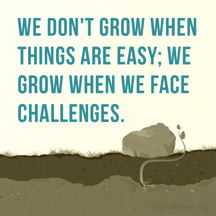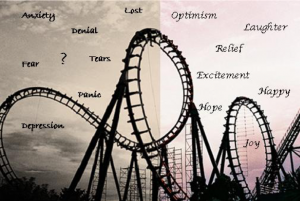Physicians
Extending the Impact of Pediatricians on the Well-Being of Teenagers
“Partners in Care”


Partners in Care is the Theme for Two Reasons
Working with pediatricians in being “partners in care” provides an opportunity for teenagers to be the authors of their lives in a very important part of those lives. Becoming the author of a life is the main shift from childhood to young adulthood – from dependence to independence and responsibility.
For pediatricians, the site provides an opportunity to dramatically extend their impact on the lives of their teen patients. Given the time limitations placed on physicians by the current healthcare reimbursement system, this is a big deal.
1. Teenagers Must Become the Author of Their Lives
There are some very specific ways that teenagers can be the author of their health care in partnership with their pediatrician – from assessment to plans of care to implementation of those plans. Taking on that authorship will not only increase their ability to influence their health, but also gives them a chance to effectively and very obviously demonstrate that they are becoming the authors of their lives.
2. The Healthcare Reimbursement System Imposes Strict Time Limits
There is a major disconnect between what is required for good healthcare for teenagers (and what pediatricians would like to provide) and what the healthcare reimbursement systems make possible. The current healthcare reimbursement system places tight limits on the amount of face-to-face time that a pediatrician can spend with a teenager in most instances. Teenagers taking on a high degree of responsibility for their health care can dramatically extend the reach and impact of a pediatrician and the site can support that.
What is Here
What follows is (1) an overview of the teen heroic journey – the teen experience; followed by (2) a quick overview of the conflict between care and reimbursement; and finally (3) some general thoughts on possible ways to respond and take advantage of the site.
This is obviously a limited look at a complex and very difficult challenge. What’s here is really designed to support discussions with colleagues and patients about how to best deal with the challenge. It’s more illustrative than complete and it’s certainly not prescriptive.
The Teen Heroic Journey – Some Basics to Remember
The Heroic Journey is Inherently Ennobling – but not all the behaviors are noble
Teens are not just incomplete adults. They are literally on a ten-year heroic journey. They are challenged to let go of their known world of childhood, encounter a great deal of unknown and face a wide range of challenges and tests, and they must discover and master the ways and competencies of young adulthood. And – they will be in-between for a long time.
They didn’t ask for that journey. They got thrown into it simply by a new stage in human development – adolescence. They will be on a rollercoaster with lots of ups and downs for ten years. They will need to call on their courage and develop resilience and the ability to persevere.
They will need to figure out how to manage their journey and become the authors of their lives – the central shift from child to young adult. And they will need support, even if they don’t seem to want it.
Teenagers Face Three Core Challenges
These are big, complex challenges that are addressed over ten years – not always in obvious ways. There is no recipe for supporting your teenager(s) in dealing with these challenges, but the big sections on each challenge provide a lot of information on each one.
- Forming an identity as a young adult. “Who am I?’ “Am I worthy?”
- Developing more mature relationships – with parents, peers and romantic partners. “Where am I connected?” “Who cares about me?”
- Building a wide range of competencies. “Am I capable of taking care of myself – of being successful?”

There are Three Different Types of Test
These are the same types of tests faced by adults in personal change – or corporate change. Teenagers just face a lot of these tests at the same time. The big section on what to expect looks at these tests in more detail, including examples.
- Letting go of the old ways of childhood
- Discovering and mastering the ways of being a young adult
- Dealing with being in-between childhood and young adulthood – “inbetweenity”
Teenagers are Tested on Five Levels
Growth through being tested will happen on various levels during the teen journey.
- Physical level
- Intellectual level
- Emotional level
- Social level
- Spiritual level
This is one reason the journey can be so confusing and unsettling at times – and exciting and rewarding at others.
The Journey is a Rollercoaster – There are Lots of Ups and Downs
The rollercoaster is a central part of the journey experience for teenagers – and for parents. And it lasts for ten years. There are naturally lots of ups and downs – they are unavoidable – just part of the journey. Expect them. Celebrate the ups and don’t let the downs diminish or discourage you or your teenager(s) – they are just part of the journey – for everyone.
- There will be successes and failures – progress and setbacks
- It’s an emotional rollercoaster with excitement and anxiety, confidence and doubts, clarity and confusion, feeling connected and feeling unconnected, etc.
- Teenagers will develop the ability to persevere and increased resilience as they go – and so will you

Healthcare Economics Vs. Teenage Health
The current healthcare system for reimbursing physicians for care makes it almost impossible for pediatricians to practice the way they would like to practice and meet the needs of many teenagers. Just compare the examples of topics to potentially be addressed (not an exhaustive lost) with the basic actions to be taken and what’s required for a good physician/teenager relationship. The lack of time provided by the reimbursement systems is simply not sufficient. It’s not even close.
The Range of Natural Topics – Major Problem
There is a stunning number of potential topics to be addressed with a teenage patient and that is a major problem given the limited time allowed for visits. The list below is illustrative (not exhaustive).
- Injuries
- Chronic disease
- Acute illness
- Depression
- Anxiety
- Drugs/alcohol
- Sleep
- Weight
- Fitness
- Developmental delays or accelerations
- Healthy lifestyle/diet
- ADHD
- Learning disabilities
- Stress
- Sex
- Friends
- Parents
- Behavioral problems
- Bullying
- Social media
- Grades
- Experience with jobs
- Sports and clubs
- Successes/wins (critical to get in the conversation)
Two Key Factors in a Good Physician/Teen Relationship
Unlike the reimbursement system, these are more within your sphere of influence, but the restrictions of the reimbursement system (time, hassle, exclusions, etc.) make them difficult to establish and maintain.
Trust
You can’t assess accurately without trust because teenagers won’t disclose much or will skirt the truth if they don’t trust enough. They will certainly not volunteer information. Compliance becomes much less likely without trust. And trust takes time to develop and it can be lost in a flash.
If you have a long relationship with a teenager, the challenge is to protect the trust. If the teenager is a new patient or you have spent little time with them because they don’t get sick or injured, building trust is the issue – and that’s tough.
You can literally ask a teenager to make the leap of faith to trust you and you can commit to doing everything you can to be worthy of that trust. You can also ask what behaviors you can show that will build their trust. It’s not a guarantee of success, but it is direct and doesn’t take much time to get it in play. It can even be part of the pre-visit prep.
Then you can follow up and ask how you are doing in being trustworthy, which keeps the core issue on the table and gives you a chance to respond if there are doubts.
Respect
Teenagers are no longer children and are engaged in a demanding heroic journey, so they are worthy of respect – although some will challenge that with some behaviors. They need to know that they are worth your time and attention and that you will partner with them in their care.
They also need more privacy and confidentiality, which can sometimes be a challenge with parents as well as space limitations in a practice. This can go beyond you as the pediatrician to your staff and processes and systems.
As with trust, you can be very direct and ask if they feel respected – and what has earned that respect. You can also find out pretty fast what’s undermining a sense of being respected.
Three Opportunities to Co-Author Care
There are three natural opportunities in the basic care process to become “Partners in Care.” Getting into that kind of co-author position helps the teenage patient become more of an author of their life and it helps you extend your reach and your impact. There are some key concepts, questions and actions in each step.
It is assumed that the way each step plays out will depend on the nature of the teenager and their health status (chronic illness, well-visit, acute injury or illness, etc.).
1. Pre-Visit Prep
Assessment is helped by teenagers who are self-aware and confident enough to disclose even sensitive information. Confidentiality is obviously key.
How much simple self-assessment can be done before a visit?
- In general, or on specific topics?
- By the teenage patient and/or parents?
How much simple prep work could be done on specific relevant topics?
- Are there links with information for them?
- Are there questions they should consider or that they might want to ask you (help them figure that out)?
- Is there anything that is relevant to the likely plan of care that they might consider?
This focus on the pre-visit prep would be designed partly to save time and get you information and partly to give the teenage patient the opportunity to engage in their care before the visit – being the author.
2. The Visit
What kind of experience do you want the teenager to have during the visit?
What will build their trust and their motivation to be an effective partner in care?
- First impressions?
- Confidentiality?
- Privacy?
- Respect?
- Comfort?
- Acknowledgement?
- Timeliness?
- Closure – last impressions?
- What roles will different staff play?
- What role will the physical environment play?
What kinds of basic plans of care can be designed that engage the teenage patient in the ultimate design?
- These can be 80-90% best practice – with clear responsibilities for teens and clinical staff – and with room for negotiating targets and customizing appropriately.
- There will also be some aspects that only the teenager can really specify.
3. Follow-Up – Implementation of the Plan of Care
This is where the teenager’s authorship again comes prominently into play. The pre-visit and follow-up are where the teenager’s authorship can really have the greatest impact. If they take the responsibility to execute their part of the plan of care that they co-authored, then the impact will be there.
They can also take responsibility to feed back their experience and outcomes so that it’s available for tracking their care, making any alterations and designing next steps.
The chart that follows is an example of the responsibilities of the teenage patient and the pediatrician in each step of the care process – being effective partners in care. Use it as a starting point.
Taking Charge of My Medical Care – Being a Partner in CareBeing the Author of My Life |
||
My Actions – Responsibilities |
My Pediatrician’s Actions – Responsibility |
|
Pre-Visit Prep |
Complete the self-assessment honestly
Identify questions to ask (High Impact) |
Provide a good self-assessment Ensure confidentiality Ensure access Ensure resources are available for information on relevant conditions & Issues (High Impact) |
Visit |
Ask your questions (can submit them ahead of time)
Answer questions honestly Co-create the plan of care (Low-Moderate Impact)
|
Ensure confidentiality
Provide privacy Provide honest response to self-assessment Treat identified conditions Provide space for questions Answer questions completely Provide resources for more information Co-create the plan of care Provide complete information and connections on referrals – Who? Why? What to Expect? (High Impact) |
Follow Up |
Implement the care plan with discipline (including any referrals)
Ask follow-up questions Contact immediately if there are problems (High Impact) |
Implement the care plan
Follow-up digitally (Low-Moderate Impact) |
Notes |
Opportunity to be the author of a life in a critical domain of life (establish a life-long approach to health)
|
Provides a connection to another trusted adult(s)
Can refer to any part of the site to support the teen patient – Reinforce care and extend reach of the physician Involvement of parents, other care giver or trusted adult will be case by case |
Notes
eVisits and MyChart type portals
How can they support pre-visit work and follow-up – including results of referral
Note on Triage/Collaboration
For some teenagers there will be referrals for other medical, social, addiction or educational services. That requires having relationships, processes and technologies in place that can be as efficient as possible. Taking the time to get that in place helps ensure that care actually is provided and with as little hassle and scrambling as possible.
Using the Site to Extend Care/Impact
You can use the site in specific simple ways to work with a teenage patient. You can set that up ahead of time by recommending that they look at specific sections. You can talk about what they found when you see them in the visit. You can follow-up by recommending specific sections. The notes below are just designed to stimulate thought.
1. Where You Have Infrequent Contact
For teens where you have infrequent contact, such as school or sports check-ups, there are still ways that you can have a significant impact. The heart of the heroic journey is becoming the author of a life and that is the basic conversation you can have with them. It doesn’t take much time (and you don’t usually have much time).
You can refer them to the site, give them a favorite quote(s) from the site, recommend a particular part of the site, etc. None of those actions take much time, but they keep you connected to your teen patients around the dominant experience in their lives. You can also extend your contact by putting parts of the journey of particular importance to you in print or on your website.
The same actions can be applied with parents and other care givers. They are on a journey too and guidance from a trusted source can make a profound difference for them.
And, I’m sure you will come up with ideas not noted here.
“I am not what happened to me. I am who I choose to become.” Emma Watson
2. Where You Have More Frequent or Intensive Contact
The heroic journey is particularly important for patients who have been diminished in some way – chronic illness, major injuries, abuse, etc. It is important because it is inherently ennobling and can help teems who have been victimized to get out of a victim posture and into more of an author posture. We are all victimized at times, but the key is to not be a victim any longer than necessary.
The general empowerment possible with teens inherent in the heroic journey can help them deal with their frustrations and limitations relative to their conditions.
Perseverance and resilience are critical for any teen on a heroic journey, but they can be particularly important for teens with chronic illnesses or facing long difficult recoveries. The emotional rollercoaster can also be more intense for them and can undermine care if not managed.
Actions. The actions noted in the infrequent contact section above are also relevant here. However, for patients with whom you have more contact, like those with chronic illnesses or a major illness or injury you may have a chance to engage with them on more of the journey.
That can be deeper conversations or getting them connected to sources of other support. It may also mean connecting more to other care givers, teachers, counselors, etc.
“Life doesn’t get easier or more forgiving, we get
stronger and more resilient.” Steve Maraboli
3. Where You Have Programmatic Influence
If you have a formal or informal clinical or administrative leadership role, you might be able to influence organizational elements that affect teens, such as policy, processes, strategy, etc. That can even be as simple as raising awareness of the issues and encouraging an organization to be more intentional.